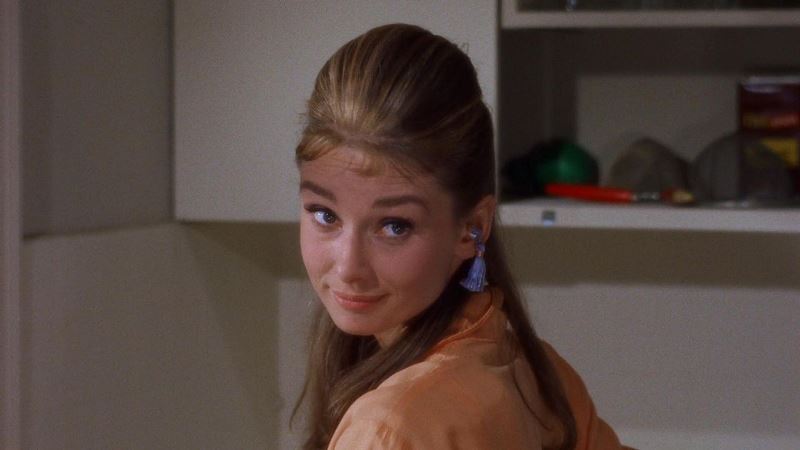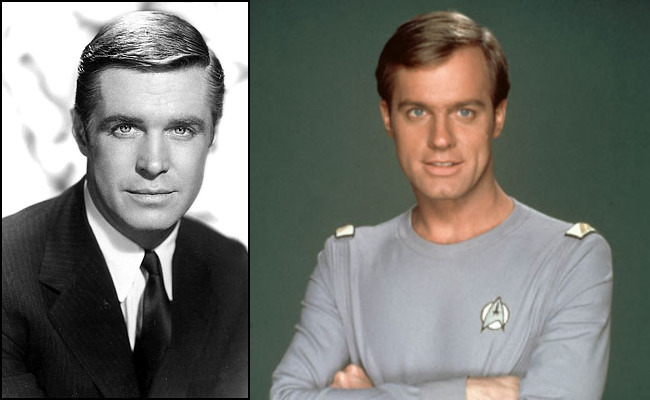I honestly thought I had seen this one, I truly did. I mean, hell, who hasn’t seen Breakfast at Tiffany’s? It’s one of the all-time beloved film classics, a flick that routinely turns up on all the “top romantic movie” lists that proliferate this time of year, and the inspiration for a pretty decent pop song from the mid-1990s. So surely I, a self-proclaimed movie buff and champion of the old stuff, surely I must’ve crossed paths with it at some point, right? But alas, no. I really hadn’t seen it, which I figured out about halfway through a recent special-engagement theatrical screening when I realized I had absolutely no idea of how it was going to end. (Well, I had a general idea, of course; I’ve seen enough movies to know how they usually turn out, and my mama didn’t raise no fool. I just mean that I didn’t know the specifics of how the story was going to get there.) I guess I must’ve seen bits and pieces of it over the years, as well as all those photos of Audrey Hepburn in that black dress and designer sunglasses, with her hair up and her two-foot-long cigarette holder, as iconic an image as James Dean in his red jacket or Bogart in his trench coat, and somehow fooled myself into believing I knew the movie.
To cut to the chase, I liked it. It was a lovely evocation of a long-gone, more urbane world than the one we now live in, and it was genuinely funny in places and truly heartbreaking in others, and generally pretty smart overall. And “Moon River,” is, of course, one of the greatest, sweetest, saddest songs ever. Nevertheless, the film wasn’t quite what I thought it was, back when I thought I’d seen it before. Here are a few observations that may seem pretty elementary to fans of the film, but struck me as worth noting:
- First and foremost, I finally see the appeal of Audrey Hepburn. I’ve long respected her as a Hollywood legend and old-school movie star, as well as a great humanitarian and, by all accounts, a damn nice person, but I never really got it when people would talk about how beautiful she was. I guess I always thought there was something a little too saintly and, frankly, sort of asexual in her later incarnation as a UNESCO spokesperson and a beloved institution. In Tiffany’s, though… ah, in Tiffany’s, she was vivacious and earthy and very, very human. I mean, this is not the face of a saint, is it?
- I also see now that she was clearly the model for a character we now call the Manic Pixie Dream Girl, the type of kooky free spirit that Zooey Deschanel has built an entire career on playing. Or rather, her Tiffany’s character Holly Golightly was the original MPDG, with one important distinction. While the MPDG’s usual role is to help a male protagonist grow as a person, or discover the joy of living or some such — think of Kirsten Dunst in Cameron Crowe’s Elizabethtown (the film that inspired critic Nathan Rabin to coin the term in the first place) or Natalie Portman in Garden State, or even Ruth Gordon in the cult classic Harold and Maude — in Tiffany’s, Holly is the broken character in need of help and growth. Rather than a person to admire or emulate, Holly is gradually revealed to be a miserable flake. Which leads me to my next point:
- For a movie that’s usually described as a comedy and a great romance, it’s actually pretty bleak. Holly Golightly and her would-be suitor Paul (played by an achingly young George Peppard) are both unhappy with their lives, Holly badly hurts poor old Buddy Ebsen and openly pursues wealthier men for their money, the plot involves a drug ring and adultery, and I’m sorry but I just don’t buy the “happy” ending… as flighty as Holly has been revealed to be, I just can’t see her sticking with Paul for longer than a year or two.
- And another thing: Breakfast at Tiffany’s is yet another classic that disproves the old lie that there wasn’t any sex in movies made before those nasty hippies came along and wrecked the studio system. Oh, sure, there isn’t a gratuitous scene of what Roger Ebert used to call “the old rumpy-pumpy,” but there is sex in this story, quite a lot of it, and none of it the sort conservatives would approve of. George Peppard’s Paul is a kept man who is being paid a stipend by the married woman he services. The scene in which Holly pops in through Paul’s window to get to know him takes place while he’s lounging in bed just after his “friend” has departed. (Yes, I did wonder what he might have had on, if anything, under the covers.) There’s a pretty strong suggestion that Holly, if not a full-time prostitute, has at least resorted to taking money for it on occasion. And what is going on in the film’s famous opening scene, in which Holly walks up a deserted street early in the morning, dressed in an evening gown, and eats a lonely breakfast of pastry and coffee in front of the windows of Tiffany’s jewelry store (hence the film’s title) if not a so-called “walk of shame?”
- It sounds as if I’m pretty down on the film, but I’m not. As I said, I quite liked it, overall. I was just surprised by how different it was from my preconceived notions of it. There was one thing about the film, however, that really did rub me the wrong way, and that was Mickey Rooney’s shockingly insulting portrayal of a Japanese man. Good lord. Now, I’m generally pretty forgiving of Hollywood’s past racial insensitivity, and I’m not reflexively put off by white people playing other ethnicities, even though modern political correctness deems that an unforgivable sin. I really didn’t mind the idea of Johnny Depp as Tonto, and hell, I’m on record as a fan of Charlie Chan movies! But Rooney’s Mr. Yunioshi is such a conglomeration of unflattering stereotypes that it’s impossible to overlook it. The buck teeth, the Coke-bottle glasses, the overly excitable personality, the fractured English… Yunioshi could have stepped right out of a World War II propaganda cartoon made 20 years earlier! Surely he was already an anachronism by the time Tiffany’s was made, in 1961! Seriously, if you cut all the scenes with Rooney, the movie would be surprisingly modern in its sensibilities, but every time this caricature appears, Tiffany’s suddenly creaks like your great-grandmother’s rocking chair. It’s the one truly regrettable flaw in an otherwise fine film.
- Finally, a word about George Peppard. We Gen Xers know him from The A-Team, of course, when he was white-haired and a bit soft from age, but he had quite a different look when he was a hunky young leading man on the rise. I recently saw How the West Was Won (1962), and spent much of that film trying to figure out who he reminded me of. It finally clicked for me during Breakfast at Tiffany’s: young Peppard was a dead ringer for young Stephen Collins, who’s probably best known as the patriarch from the schmaltzy TV series Seventh Heaven, but is better remembered by we Trekkies for his role as Commander Will Decker in Star Trek: The Motion Picture (1979). I think he was probably about the same age then that Peppard was in Tiffany’s, and the resemblance is uncanny, to my eye:



